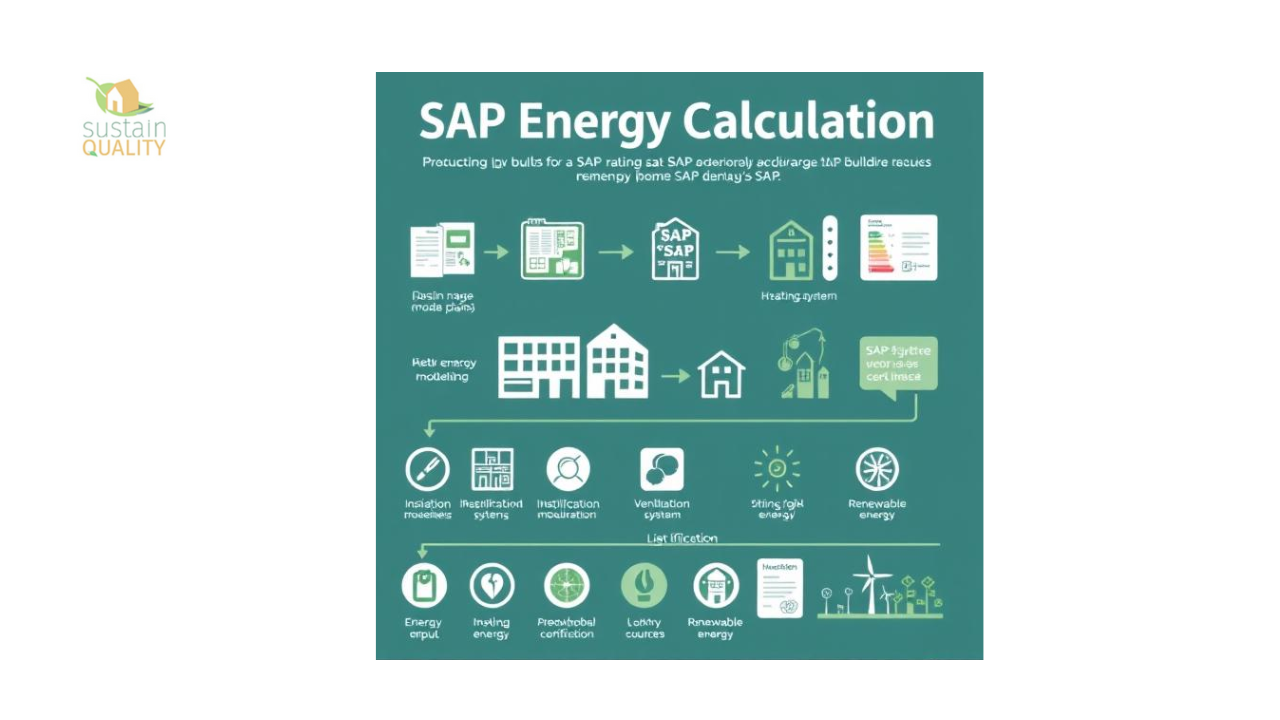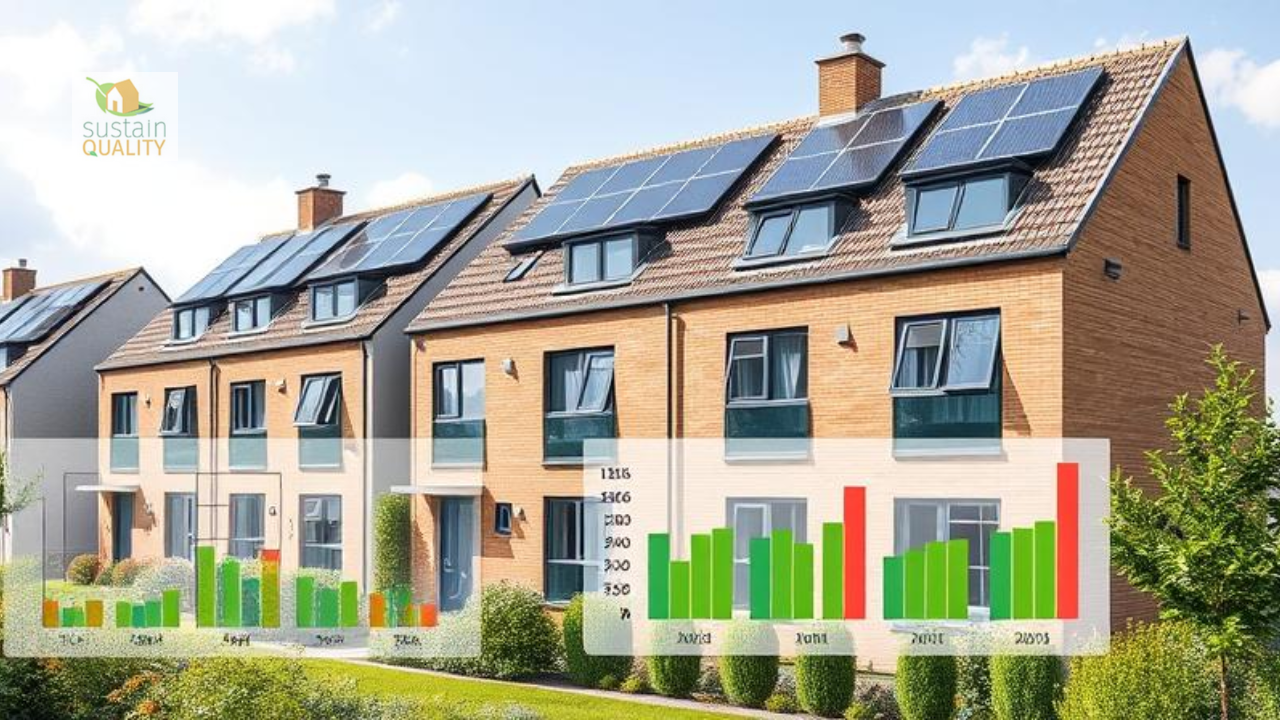Why SAP Energy Calculations Matter in Today’s Built Environment
In the UK, the push toward energy efficiency, carbon reduction, and net-zero building certification is transforming how homes and commercial spaces are designed. From local councils to national policy, sustainability is no longer optional — it’s a requirement. Whether you’re a developer, architect, or sustainability consultant, understanding SAP Energy Calculations for UK buildings is essential for compliance and long-term energy performance.
As part of building compliance solutions, SAP (Standard Assessment Procedure) calculations determine a building’s predicted energy use, carbon emissions, and efficiency. In a landscape driven by BREEAM environmental standards, life cycle assessment sustainability, and net zero building certification, these calculations provide a measurable foundation for sustainable construction.
What Are SAP Energy Calculations?
SAP Energy Calculations are the UK government’s approved methodology for assessing the energy performance of residential buildings. Used in both new builds and conversions, SAP quantifies how efficiently a building will use energy for heating, cooling, lighting, and ventilation.
Key Components
-
Building fabric – insulation levels, thermal bridging, and airtightness.
-
Heating and hot water systems – type, efficiency, and fuel source.
-
Ventilation and lighting – mechanical systems and low-energy fittings.
-
Renewable technologies – integration of solar panels, heat pumps, and more.
These factors combine to produce a SAP rating — a numerical score from 1 to 100+ — and determine compliance with Part L of the Building Regulations.
For non-domestic buildings, a similar process is done using the Simplified Building Energy Model (SBEM), resulting in commercial SBEM calculations.
How Do SAP Calculations Work?
SAP calculations model a building’s energy use using software accredited by the government. Here’s how the process works:
-
Design Stage Assessment:
Before construction, your sustainability consultant or energy assessor inputs design details (materials, U-values, heating systems) into SAP software to calculate projected performance. -
Building Fabric & Systems Analysis:
The software simulates annual energy consumption and CO₂ emissions, accounting for heating demand, solar gains, and occupancy assumptions. -
Result Comparison:
The proposed design’s emissions are compared against a notional building’s benchmark. If your building performs better, it passes Building Regulations Part L. -
As-Built SAP Calculations:
Once construction is complete, an updated assessment (with verified on-site data) ensures the building meets or exceeds design-stage performance.
Example
For a new three-bedroom home in London, the SAP model might reveal that by upgrading wall insulation and switching to an air-source heat pump, the Dwelling Emission Rate (DER) can drop by 25%, ensuring compliance and improved EPC ratings.
Key Features and Benefits of SAP Energy Calculations
-
Energy Efficiency Certification – Demonstrates compliance with Part L and supports Energy Performance Certificates (EPCs).
-
Cost Savings – Identifies design improvements that lower operational costs.
-
Sustainability Benchmarking – Aligns with BREEAM sustainability assessment and environmental sustainability statements.
-
Design Optimization – Helps architects and engineers select efficient systems.
-
Future-Proofing – Supports long-term sustainability reporting services UK and net-zero strategies.
-
Regulatory Compliance – Essential for building control approval and BREEAM in use certification.
Advantages Over Traditional Methods
Traditional construction often relied on manual calculations or general assumptions about performance. SAP and SBEM calculations provide a data-driven, standardized approach that offers:
-
Greater accuracy and transparency in energy predictions.
-
Compatibility with renewable technologies and smart systems.
-
Integration with life cycle assessment services UK for long-term sustainability planning.
-
Compliance assurance that meets both domestic and commercial SBEM calculations requirements.
By contrast, older manual methods cannot model dynamic factors like seasonal variation, occupancy patterns, or passive solar design.
Installation and Setup: How to Obtain SAP Calculations
While SAP calculations are not a physical installation, they are an essential step in the building compliance process.
Step-by-Step Guide:
-
Hire a Qualified SAP Assessor or Sustainability Consultant:
Work with a sustainability consultancy London or BREEAM consultants London experienced in energy modeling. -
Provide Architectural Plans:
Include detailed drawings, construction specifications, and system choices. -
Receive Design Stage SAP Report:
The consultant models your design and offers improvement recommendations. -
Implement Design Adjustments:
Apply suggested upgrades to insulation, glazing, or heating. -
Submit As-Built SAP Calculations:
Once construction finishes, submit updated calculations for building control approval and EPC issuance.
Pro Tip: Engaging a sustainability consultant London early in the design phase can save time, costs, and potential rework.
Tips to Maximize Energy Efficiency and SAP Performance
-
Prioritize Insulation Quality: Use high-performance materials with verified U-values.
-
Seal Air Leaks: Improved airtightness enhances both comfort and ratings.
-
Use Efficient Systems: Opt for A-rated boilers, heat pumps, or solar PV.
-
Incorporate Renewable Energy: On-site generation reduces emissions and energy bills.
-
Optimize Orientation: Position windows for maximum solar gain without overheating.
-
Work With Experienced Consultants: Choose environmental strategy consultants UK for integrated sustainability and compliance solutions.

Common Mistakes to Avoid
-
Late Involvement of SAP Assessors: Engaging them after design completion may limit optimization opportunities.
-
Ignoring Thermal Bridging: Unaccounted heat loss can cause compliance failure.
-
Incomplete Data Submission: Missing specifications delay approval.
-
Overlooking Ventilation Systems: Poor airflow design impacts SAP scores.
-
Misunderstanding Renewable Payback: Ensure proper system sizing for true efficiency gains.
FAQs About SAP Energy Calculations
1. Can I do SAP calculations myself?
No. Only accredited assessors or sustainability consultants can perform SAP assessments, as they require approved software and certification.
2. How much energy can SAP compliance save?
Upgrading insulation, windows, and systems to meet SAP standards can reduce annual energy costs by 20–40%.
3. Are SAP calculations mandatory for extensions?
Only when large extensions or material changes affect thermal performance, but always check with building control.
4. How do SAP and SBEM differ?
SAP applies to dwellings; SBEM (Simplified Building Energy Model) applies to non-domestic buildings. Both are part of Energy performance calculations for buildings.
5. Do SAP calculations support BREEAM assessments?
Yes. They feed into BREEAM sustainability assessment and BREEAM in use certification, contributing to higher sustainability ratings.
6. Can SAP data be used for sustainability reporting?
Absolutely. It supports sustainability reporting services UK and ongoing building energy performance assessment.
Conclusion: Building a Sustainable Future Through Accurate Energy Calculations
Understanding and applying SAP Energy Calculations for UK buildings is vital for achieving environmental sustainability, cost savings, and compliance. Whether you’re targeting BREEAM in use certification, Net Zero Building Certification, or simply aiming to future-proof your development, SAP and SBEM calculations are the foundation of responsible construction.
Partnering with experienced sustainability consultants London ensures every stage—from design to certification—is optimized for performance, efficiency, and environmental impact.
By investing in professional Sustainability compliance services UK, you’re not only meeting today’s regulations but contributing to a greener, smarter, and more sustainable future.
